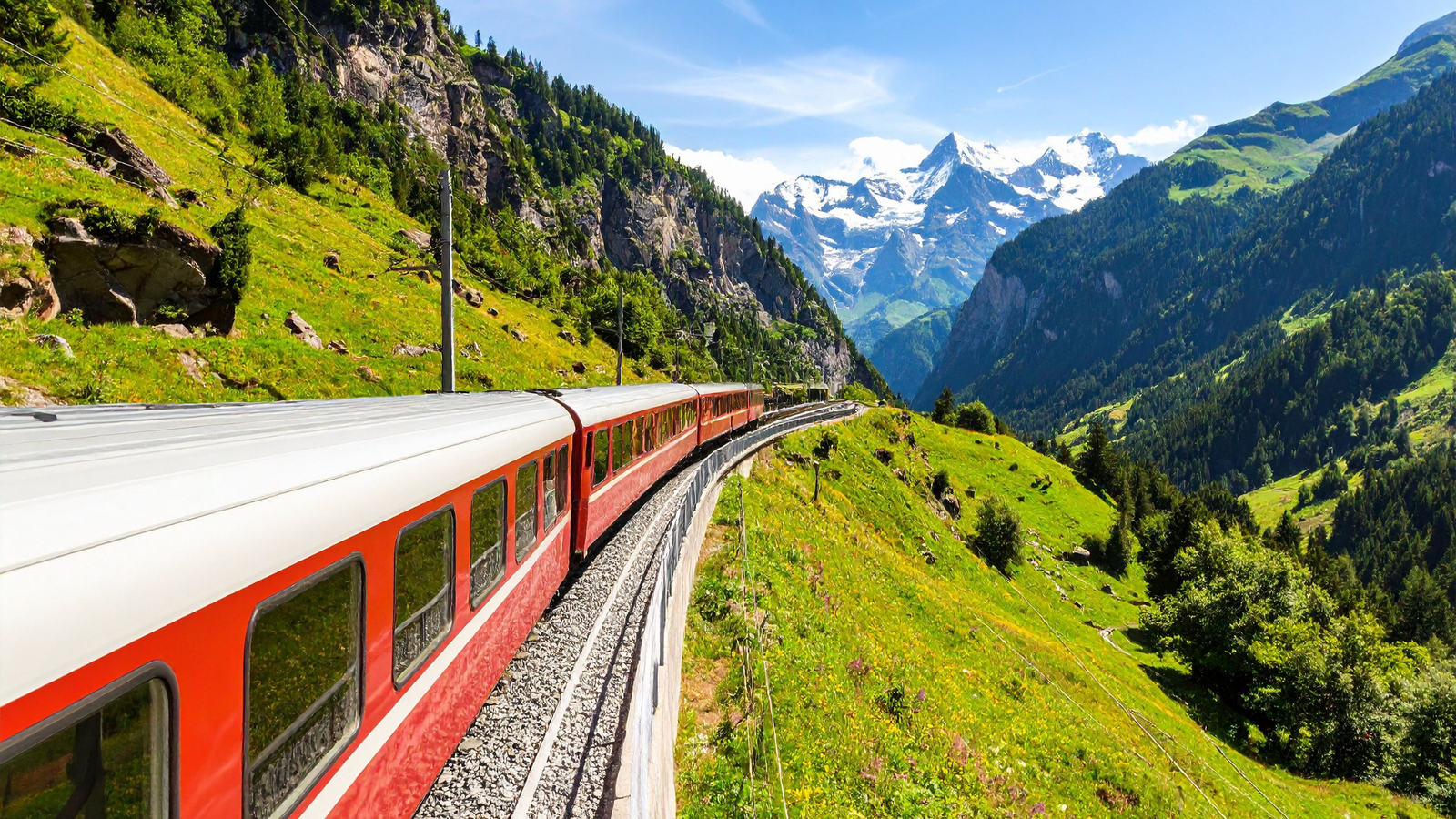
Some results use affiliate links. Eco Nomad Travel may earn a small commission at no extra cost to you.
Partners include Trip.com, Aviasales, Airalo, and more.
How to Book European Sleeper Trains 2025: The Rail-First Eurotrip Guide
If you’ve wondered how to book European sleeper trains 2025 without twelve tabs and guesswork, this deep-dive shows you route discovery tools, privacy levels (couchette vs sleeper), refund rules, price patterns—and when a short flight still makes sense. We also share booking scripts, packing tips, and internal links to help you travel rail-first.
Disclosure: Some buttons are affiliate links (e.g., Amazon, flights, hotels). If you purchase via our links, Eco Nomad Travel may earn a commission at no extra cost to you.
Published: • Updated:
Key takeaways
- Start with routes, not tickets. Use open maps and official operators to confirm that a line actually runs on your date before you try to book.
- “How to book European sleeper trains 2025” in one line: pick a route → check the operator’s night-train brand → compare the same train on 1–2 portals → choose your privacy level → lock a cancellable stay near the station.
- Price patterns: book earlier for private sleepers; couchettes stay affordable longer. Friday/Sunday nights price higher.
- Rights: delays/cancellations usually mean seat on next train or refund. Photograph timetables and keep receipts for claims.
- Pack for quiet: eye mask, ear plugs, soft-bag carry-on, and solids (no liquid leaks). See our zero-waste packing list 2025.
Route discovery tools (find real trains first)
The fastest way to master how to book European sleeper trains 2025 is to separate finding a night route from buying tickets. Start here:
Open discovery (good first pass)
- Back-of-network maps: Use pan-European route maps and open schedule viewers to see overnight lines before you pick dates.
- Timetable overlays: Overlay your travel day and check if the night train runs daily or only certain days of the week.
- Station pages: Confirm station names (city cores often have multiple stations—aim for the central one to simplify last-mile).
Operator & brand names (search these directly)
- ÖBB Nightjet (Austria ↔ Germany/Italy/Belgium/Netherlands/France corridors)
- European Sleeper (seasonal/expanding Benelux ↔ Germany ↔ CEE corridors)
- SNCF/RENFE/Trenitalia night services (select domestic + cross-border)
- Nordic & CEE operators for domestic sleepers (Sweden/Finland/Poland/etc.)
Ready to pick trains? Pair this with our Night Trains Europe 2025 and route-agnostic emissions guide Train vs Plane (2025).
How to book European sleeper trains (step-by-step)
- Choose your corridor. Example: Amsterdam → Berlin → Prague → Vienna. Lock dates where overnight segments are strongest (Fri night out, Sun night back).
- Check the operator/brand site. Find the specific night train number for your date; note intermediate stops and arrival time windows.
- Compare 1–2 portals. Search the same train on the operator site and one trusted aggregator. Keep names consistent (train number, class).
- Pick privacy level. Decide between seated, couchette (4–6), or sleeper (single/double/deluxe with shower). See privacy breakdown.
- Add berth preferences. Solo travelers often prefer upper berths for privacy; families/duos choose private compartments.
- Book cancellable stays near stations. Sleep 1–2 blocks from departure and arrival stations to reduce transfers.
- Save PDFs + receipts. Screenshot the itinerary, timetables, and fare conditions so claims are easy if needed.
Couchette vs sleeper: privacy, comfort, safety
Seated (cheapest)
- Best for: very short overnights or tight budgets.
- Downsides: light/noise, limited privacy; bring eye mask/ear plugs/neck pillow.
Couchette (4–6 berths)
- Best for: groups/families; solid value for sleep.
- Notes: mixed vs women-only options vary; linens usually included.
Sleeper (single/double/deluxe)
- Best for: privacy, work next day, couples, business.
- Notes: washbasin or shower in-compartment on some brands; breakfast often included.
Security & etiquette
- Keep valuables in a small cross-body pouch; lock large zips with a cable tie.
- Respect quiet hours; use soft luggage to avoid banging hard shells at night.
What it costs (and how to save)
- Dynamic pricing: private sleepers price up earlier; couchettes stay moderate longer.
- Day-of tactics: if sold out in one portal, try the operator site or split the search at a hub.
- Pass-holders: a rail pass does not usually include the sleeper supplement—reserve berths early.
- Calendar sweet spots: midweek nights and non-holiday periods are cheaper and calmer.
If your plan is flexible, compare overnight rail with short daytime rail + cheap hotel, or rail one way + night train back.
When flying still makes sense
We love rail-first travel, but the honest answer to how to book European sleeper trains 2025 sometimes is: don’t—if the route is a huge detour, runs infrequently on your date, or crosses multiple slow borders. In those cases, consider:
- Short flight + rail onward: fly into a hub with strong night-train options, then continue by rail.
- Daytime high-speed: two daylight segments with a café stop can beat a choppy night route.
Compare emissions and comfort tradeoffs here: Train vs Plane (2025).
Refunds, delays & passenger rights
- Keep evidence: photos of platform boards, conductor notes, and receipts for replacement transport if advised.
- Immediate remedies: rebooking on next available service or refund per fare conditions; some operators include hotel if arrival is after certain hours—ask onboard staff.
- Missed connections: through-tickets usually protect connections; separate tickets require more advocacy—arrive earlier or plan longer transfer windows.
- Claims window: submit within the stated period (often 30–60 days) with screenshots and PDFs attached.
Booking scripts you can copy
Script A: full privacy, two legs
- Pick night train number and verify it runs on your date.
- Search the operator site. Choose private sleeper (single/double) and select upper/lower as preferred.
- Open a second portal in a new tab; price-check the same train number and class.
- Book the lower fare; screenshot fare rules before paying. Save tickets offline.
Script B: budget couchette + local morning
- Book couchette (4–6) on the overnight leg.
- Add a cheap morning commuter/high-speed to reach your final city after a shower and coffee at the station.
Packing for night trains (quiet, compact, zero-waste)
- Soft 30–38 L bag that fits easily in compartments; avoid hard-shell clatter at midnight.
- Solids vs liquids: detergent sheets, soap sheets, shampoo bar, toothpaste tablets—no leak risk in couchettes.
- Sleep kit: eye mask, ear plugs, light hoodie, thin travel towel, and a cable tie for zips.
- Refillable bottle + cup: hydrate, then stow the cup dry before lights-out.
More on plastic-light kits: eco travel kit 2025 · zero-waste packing list 2025.
Smart sample itineraries (rail-first)
Benelux → Central Europe (3–5 nights)
- Amsterdam → Berlin (day HS) → night to Prague → Vienna (day) → return by night.
- Book private sleeper for the longest leg; couchette for shorter overnights.
Iberia → Alps (4–6 nights)
- Barcelona → Southern France (day) → night to northern Italy/Austria.
- Split tickets at big hubs if your portal can’t find through options.
For weekend hops, use our emissions guide: train vs plane 2025.
Final thoughts: a realistic way to book European sleeper trains in 2025
If you remember only one framework for how to book European sleeper trains 2025, make it this: route → operator → privacy → portals → proximity. Routes come first because they anchor everything—if a night train doesn’t run on your date, no trick can conjure it. Operator pages come second: brand names like Nightjet or European Sleeper tell you what rolling stock, privacy options, and refund rules to expect. Third, decide your privacy level before you look at prices; it’s the difference between arriving rested and arriving wrecked. Fourth, compare one additional portal—but compare the same train number and class so you’re not mixing apples and oranges. Finally, book a cancellable stay within a 10–12 minute walk of both your departure and arrival stations to shrink transfers and keep the whole plan calm.
Night trains turn dead time into real travel, but they reward a few disciplined habits. Check timetables on the exact weekday you’ll travel—Friday and Sunday patterns differ from Tuesday and Wednesday. Photograph departure boards so you can document delays later. Carry a soft 30–38 L bag, not a hard shell; you’ll move quietly through cabins after lights-out. Pack solids (soap sheets, shampoo bars, toothpaste tablets) so a jolting brake won’t baptize your backpack. If you’re using a rail pass, remember that couchette/sleeper supplements sell out—reserve berths early, long before you reserve a café in Vienna.
There are times when a short flight is the honest answer. If your target leg runs twice a week or requires a six-hour detour, fly into a hub with dense overnight service and continue by rail. It’s still rail-first, just smarter. And if portals fail to show what you need, split the search at a major node (Berlin, Paris, Milan, Vienna, Zurich). The same overnight train often appears once you search half the route; stitch legs together after you verify train numbers and times.
FAQ (2025)
When do sleeper bookings open?
Windows vary by operator. Popular routes open months ahead; private sleepers sell faster than couchettes. Set alerts and check weekly.
How do Eurail/Interrail passes work with sleepers?
Passes cover the base fare on most routes, but you must pay a reservation/supplement for couchettes or sleepers. Reserve early.
Women-only options?
Some operators offer women-only couchettes on select trains. If not visible online, ask the operator directly before purchase.
How much luggage can I bring?
There’s no airport-style limit, but keep it compact: one carry-on soft bag and a small daypack fits most compartments comfortably.
Are bikes allowed?
Varies by route and coach type. If allowed, you usually must reserve a bike spot. Folding bikes fare better in compartments.
Sources & operator links
- ÖBB Nightjet (official)
- European Sleeper (official)
- SNCF Intercités de Nuit
- Renfe (Spain) – long-distance & night
- Trenitalia (Italy) – Intercity Notte
- EU passenger rights (rail)
- Back-on-Track Europe (advocacy & updates)
We avoid deep-linking to volatile timetables; always re-check schedules and fare rules before purchase.
More from Eco Nomad Travel
Advanced playbook: how to book European sleeper trains in 2025 (text-heavy)
Operator portals, booking windows, berth types, edge cases, refund rules, and cross-border quirks—designed to answer “how to book European sleeper trains 2025” in one place.
Operator & booking portal directory (major European sleepers)
Use official portals for couchette/sleeper selection, then compare with national sellers and global OTAs.
- ÖBB Nightjet — nightjet.com
- European Sleeper — europeansleeper.eu
- SNCF Intercités de Nuit — sncf.com
- Trenitalia Intercity Notte — trenitalia.com
- SJ (Sweden) Night trains — sj.se
- Snälltåget — snalltaget.se
- ČD (Czech Railways) — cd.cz
- PKP Intercity — intercity.pl
- RegioJet — regiojet.com
- Caledonian Sleeper — sleeper.scot
Expert playbook: booking flow that works in 2025
- Discover the route in a map tool/aggregator, then confirm on the operator portal named above.
- Check inventory windows: many sleepers load seats months out, but private berths can appear closer to departure.
- Price the privacy level (reclining seat → couchette (4–6) → sleeper (single/double/deluxe with shower)).
- Book the exact compartment type you want on the operator site if possible; some third-parties mask options.
- Lock plan B: a morning fast train or backup flight on a free-cancellation fare. Overnight disruptions do happen.
- Seatmate control (where offered): choose “women only” couchettes when relevant; select whole-compartment for privacy.
- Tickets + QR: save offline PDFs; bring ID that matches the booking name.
Refunds & delays (quick reality check)
- Within one operator: you’re usually offered rebooking or refund per fare rules.
- Cross-operator chains: protections vary—build longer transfer buffers where you switch operators or countries.
- Delays overnight: staff can provide amenities on major disruptions; keep receipts if you self-arrange lodging.
Glossary for first-timers (so you book the right bed)
- Couchette: padded bunk (usually 4–6 per compartment), bedding included, mixed or women-only.
- Sleeper: 1–3 berths per compartment, more privacy; “deluxe/plus” may include shower/WC.
- Berth: the actual bed you are reserving inside a couchette/sleeper compartment.
- Compartment: the private space of multiple berths; “single/double/triple” refers to berths sold.
More planning help on Eco Nomad Travel: night trains 2025 · train vs plane emissions 2025 · eco travel kit · zero-waste packing.
Route discovery tools (and how to sanity-check them)
Step 1: sketch routes in a pan-Europe planner; Step 2: verify trains/compartments on the operator site; Step 3: only then price alternatives (fast day trains, night trains on different days, or a backup flight).
- Use a map/planner to reveal overnight options; confirm exact train numbers and sleeper types at the operator portal.
- When two sleepers exist on adjacent days, compare privacy/amenity differences rather than defaulting to the cheaper fare.
- Build slack at border change points (e.g., Salzburg, Basel, Hendaye) if you must change operators.
Sources & official references
Disclosure: Some tools above are affiliate links. We may earn a commission if you book through them.
Find Eco-Friendly Stays
Discover sustainable hotels, lodges, and boutique stays that align with your eco-values. Search any destination and we’ll connect you with Trip.com partners.
Partnered via Trip.com through Travelpayouts.
Eco Nomad Discovery Hub
Explore a greener way to travel — from eco stays and low-impact transport to digital tools that help you stay connected sustainably.
Affiliate Disclosure: This travel hub includes affiliate links. Purchases made through these links may earn a small commission at no cost to you.
Supported by Trip.com and Travelpayouts partners.


